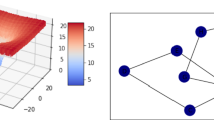Abstract
The first aim of simulation in virtual environment is to help biologists to have a better understanding of the simulated system. The cost of such simulation is significantly reduced compared to that of in vivo simulation. However, the inherent complexity of biological system makes it hard to simulate these systems on non-parallel architectures: models might be made of sub-models and take several scales into account; the number of simulated entities may be quite large. Today, graphics cards are used for general purpose computing which has been made easier thanks to frameworks like CUDA or OpenCL. Parallelization of models may however not be easy: parallel computer programing skills are often required; several hardware architectures may be used to execute models. In this paper, we present the software architecture we built in order to implement various models able to simulate multi-cellular system. This architecture is modular and it implements data structures adapted for graphics processing units architectures. It allows efficient simulation of biological mechanisms.







Similar content being viewed by others
References
Amir-Kroll H, Sadot A, Cohen IR, Harel D (2008) GemCell: a generic platform for modeling multi-cellular biological systems. Theor Comput Sci 391(3):276–290
Ballet P (2012) BioDyn, interdisciplinary approach for creating and designing integrated modelling and simulation software in computational biology. Accreditation to direct research. University of Western Brittany, France
Ballet P, Roger JC (2011) Matrix studio: an integrated development environment to create program using opencl devices. http://pagesperso.univ-brest.fr/~ballet/matrixstudio
Ballet P, Tracqui P (2007) Deformable virtual cell migration: biomechanical and multi-agent modeling of cell migration. RSTI série TSI (No Spécial “Modélisation et simulation pour la post-génomique”), Edition Lavoisier—Hermes Sciences—volume 26—no. 1-2/2007 (In French)
Chaturvedi R, Huang C, Kazmierczak B et al (2005) On multiscale approaches to three-dimensional modelling of morphogenesis. J R Soc Interf 2(3):237–253. doi:10.1098/rsif.2005.0033
Cussat-Blanc S, Luga H, Duthen Y (2008) From single cell to simple creature morphology and metabolism . In: Artificial life. Winchester, 05/08/08-08/08/08, ACM
Fleury V (2011) A change in boundary conditions induces a discontinuity of tissue flow in chicken embryos and the formation of the cephalic fold. Eur Phys J E Soft Matter Biol Phys 34:1–13
Hoehme S, Drasdo D (2010) A cell-based simulation software for multi-cellular systems. Bioinformatics 26(20):2641–2642
Holcombe M, Coakley S, Smallwood R (2006) A general framework for agent-based modelling of complex systems. In: Proceedings of the 2006 European conference on complex systems
Knuth DE (1998) The art of computer programming, volume 3: 2nd ed., sorting and searching. Addison Wesley Longman Publishing Co., Inc, CA, USA
Loew LM, Schaff JC (2001) The virtual cell: a software environment for computational cell biology. Trends Biotechnol 19(10):401–406. doi:10.1016/S0167-7799(01)01740-1
Lysenko M, D’Souza RM (2008) A framework for megascale agent based model simulations on graphics processing units. J Artif Soc Soc Simul 11(4):10
Merks RM, Glazier JA (2005) A cell-centered approach to developmental biology. Phys A Stat Mech Appl 352(1):113–130. doi:10.1016/j.physa.2004.12.028
Plimpton SJ, Slepoy A (2005) Microbial cell modeling via reacting diffusive particles. J Phys 16:305–309
Richmond P, Coakley S, Romano D (2009) Cellular level agent based modelling on the graphics processing unit. High Perform Comput Syst Biol 0:43–50
Tisue S, Wilensky U (2004) Netlogo: design and implementation of a multi-agent modeling environment. In: Proceedings of agent 2004
Tomita M, Hashimoto K, Takahashi K et al (1999) E-cell: software environment for whole-cell simulation. Bioinformatics 15(1):72–84
Tripodi S, Ballet P, Rodin V (2010) Self-organization of a virtual multicellular organism by adding a shape model in the cellular potts model. In: Proceedings of artificial life XII , Odense-Denmark, Denmark, pp 249–256
Walker DC, Southgate J (2008) The virtual cell—a candidate coordinator for “middle-out” modelling of biological systems. Brief Bioinfo 10(4):45046
Acknowledgments
This work has been funded by the Région Bretagne, France.
Author information
Authors and Affiliations
Corresponding author
Rights and permissions
About this article
Cite this article
Jeannin-Girardon, A., Ballet, P. & Rodin, V. A Software Architecture for Multi-Cellular System Simulations on Graphics Processing Units. Acta Biotheor 61, 317–327 (2013). https://doi.org/10.1007/s10441-013-9187-3
Received:
Accepted:
Published:
Issue Date:
DOI: https://doi.org/10.1007/s10441-013-9187-3




